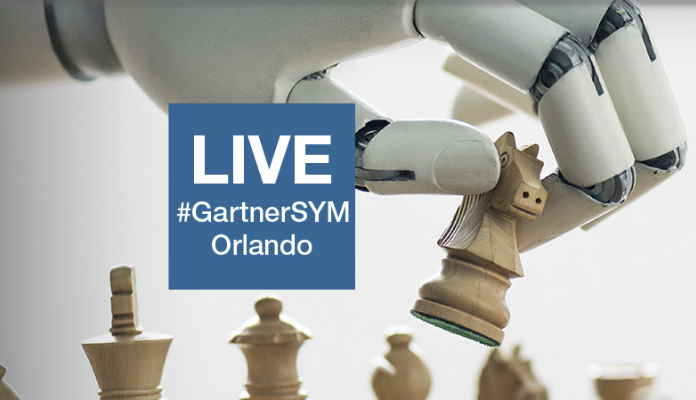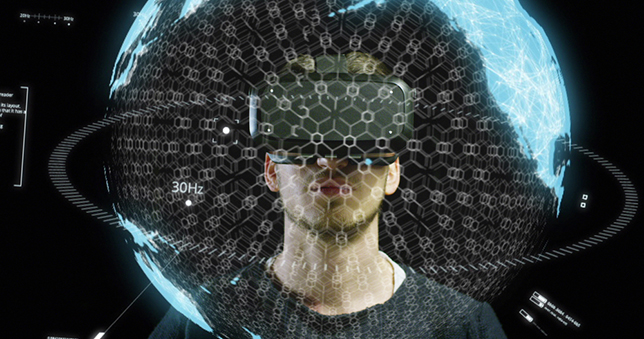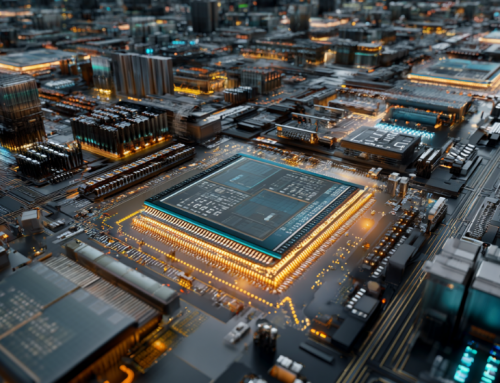Gartner Issues Annual List of Top 10 Tech Trends
At its annual conference, Gartner released its predictions for Top 10 Tech Trends for 2019⏤many of them similar to 2018’s trends, but with a few new spins.
The analytical group primarily predicted at the Gartner 2018 Symposium/ITxpo in Orlando last week that autonomous “things” will use AI to perform tasks at a higher rate than before, whether it’s via cars, robots or agricultural machines. Robotics, vehicles, drones, appliances and agents will take over a lot of the busywork that people do now. Also security will be enhanced, whether its in parking lots or online, AI will help prevent crime.
“The future will be characterized by smart devices delivering increasingly insightful digital services everywhere,” said David Cearley, Gartner vice president and Fellow. “We call this the intelligent digital mesh.”
Here are the trends, ranked in order:
- Blockchain, quantum computing, augmented analytics and artificial intelligence will drive disruption and new business models.
- Augmented analytics: The massive amounts of data available paired with algorithms will automate more than 40% of data science tasks by 2020.
- AI-driven development: AI will develop platforms, services and tools that automate programs at a faster rate.
- Digital twins: A digital twin is a digital representation that mirrors a real-life object, process or system. Digital twins can also be linked to create twins of larger systems, such as a power plant or city.
- Empowered edge: Edge computing is a topology where information processing and content collection and delivery are placed closer to the sources of the information, with the idea that keeping traffic local will reduce latency. IoT and devices from smartphones to autonomous cars will work better and faster.
- Immersive technologies: Augmented reality (AR), mixed reality (MR) and virtual reality (VR), which change how users perceive the world, will lead to a new immersive experience. This may help technology to perform better, too.
- Blockchain: It will continue to expand to government, healthcare, manufacturing, supply chain and other areas, potentially lowering costs, reducing transaction settlement times and improving cash flow.
- Smart spaces: A physical or digital environment in which humans and technology-enabled systems interact in increasingly open, connected, coordinated and intelligent ecosystems. As technology becomes a more integrated part of daily life, smart spaces will enter a period of accelerated delivery. Smart cities will maximize this trend.
- Digital ethics and privacy: Governments are increasingly planning or passing regulations with which companies must be compliant, and consumers are carefully guarding or removing information about themselves. Companies must gain and maintain trust with the customer to succeed.
- Quantum computing: Real-world applications range from personalized medicine to optimization of pattern recognition. This technology is still in an emerging state, which means it is a good time for businesses to increase their understanding of potential applications and consider any security implications.
 Several publications focused on the significance of immersive experiences, quantum computing and augmented analytics as significant concepts for the year. Peter High, writer for Forbes.com, cited the “swarm” of autonomous things as a trend worth noting. “Artificial intelligence is increasingly providing the brains for autonomous things such as robots, drones, and autonomous vehicles, empowering them to more naturally interact with both their surroundings and with people,” High wrote.
Several publications focused on the significance of immersive experiences, quantum computing and augmented analytics as significant concepts for the year. Peter High, writer for Forbes.com, cited the “swarm” of autonomous things as a trend worth noting. “Artificial intelligence is increasingly providing the brains for autonomous things such as robots, drones, and autonomous vehicles, empowering them to more naturally interact with both their surroundings and with people,” High wrote.
The Journal.com, which covers technology for educators, cited the immersive trend as one of great interest.
“The ubiquitous use of Amazon Alexa in American homes to turn on music, turn off a light or tell a joke is one simple case; vocal interaction changes the processes for those activities. But the impact reaches even further in work. Companies are using remote assistance through digital channels, for example, to enable “an expert engineer to work with somebody in a remote factory to get a piece of equipment back online, saving millions of dollars so the production line is not down,” Cearley said.
read more at gartner.com.








Leave A Comment